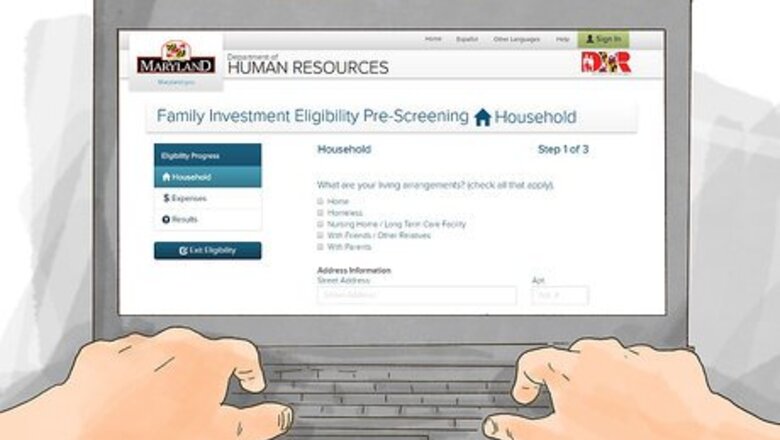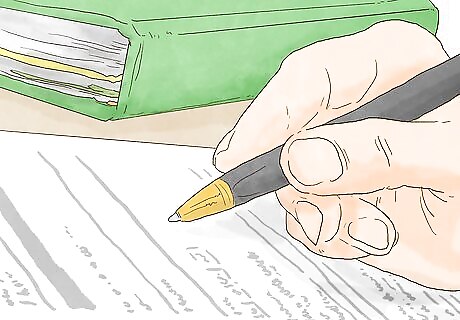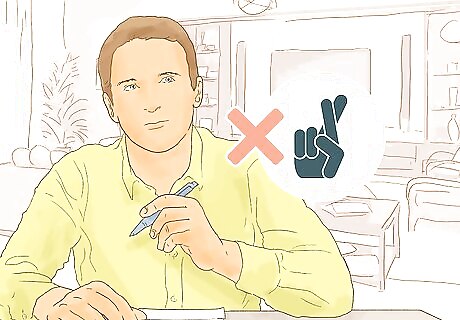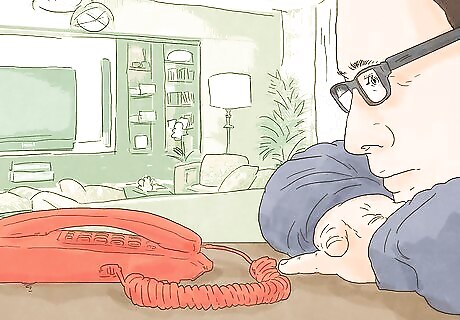
views
Beginning the Application

See if you're eligible. To save yourself some trouble, see if you're eligible before filling out an application. Maryland has a food stamp calculator (https://mydhrbenefits.dhr.state.md.us/dashboardClient/#/householdInfo) where you can check if you qualify. You'll fill in information about your household size and income, as well as any other cash or assets you have, to determine if you're eligible for the program.

Find the application. The easiest way to find the application is to go online to https://mydhrbenefits.dhr.state.md.us/, where you will find the application for food stamps. Choose the "Family Investment" application, which is an umbrella application for many social service programs, including food stamps. However, your local social services office also has applications you can fill out in person, or you can ask for one to be mailed to you by calling in. To find your local social services office, use this site to find one near you: https://mydhrbenefits.dhr.state.md.us/dashboardClient/#/dssMap

Create an account. If you're filling out an application online, the easiest way to use the service is to create an account. You'll need an email address and a password (that you create) so that you can return to the application in the future. You'll need to type in information such as your address, your full name, and your Social Security number. If you don't have an email or don't want to create an account, you can fill in a standalone application online from the MyDHR site.
Filling in the Application

Start with biographical information. The first part of the application is biographical information, such as your full name, your address, and the language you speak. You'll also need to fill in any assistance you or other family members are receiving. If you don't speak English, request free translation services from your case manager. If you don't have a case manager, you can call 1-800-332-6347 to request translation services. It's the main number for the Maryland State Department of Human Resources.

Add information for each household member. When filing for benefits, you must include details about each household member you're filing for. Generally, the people you include are those who cook and eat meals with you, as well as children. Fill in their name, Social Security number (if they're a U.S. citizen), sex, and whether they are in school or not. If household members are not citizens, you'll need to fill in information about their legal status in the country, including their INS number.

Fill in your assets and expenses. Next, discuss your finances. The government wants to know what you have in savings, what your income is, what you pay in rent, and so on to decide if you're eligible for food stamps. Start with any major financial assets, such as stock or bond accounts. Then, add in your earned income. Add any other income you receive, such as alimony, disability, Social Security, veteran's benefits, or worker's compensation. Fill in information about the money you pay for child or elderly care, as well as child support. You'll also add information about how much you pay in rent and utilities, so you may need to have bills on hand for that information. Include information you pay on medical expenses, as well.

Include information about your criminal background. The application has a section on your criminal background, as well as anyone else you're applying for. It asks about drug felonies, probation violations, and past food stamp application fraud.

Leave questions you don't understand blank. If you don't understand a section, you can leave it blank, though you do need to fill in the basic biographical information. If you leave a section blank, your case worker will help you fill it in when you go in for an interview.

Fill in any other relevant sections. The application also has sections that you can fill in if you're applying for other services, such as Temporary Cash Assistance or Medical Assistance. However, if you are just filing for food stamps, you likely won't need to fill in these sections.

Answer honestly. You may be tempted to fib here and there on the application. However, it's important that you answer honestly. If you're caught in a lie, the least that will likely happen is you'll be thrown out of the program. However, you could also be jailed or made to pay a fine, depending on the severity of the lie.
Finishing the Application

Submit the application. Online, you simply submit the application at the end of filling it out. In person, you can submit it at the office you received it from. If you had the form mailed to you, follow the instructions on the form for mailing it back in.

Wait to hear about your interview. After you submit your application, you'll need to go in for an interview. Basically, the interview is just a way for you to learn about the program, as well as to help you fill in any blanks you missed on the application. However, you will be asked to verify parts of your application, so bring in any paperwork you can, such as pay stubs, bills, legal documents (for child support), and so on. You'll also need an ID. Often, if you fill out the form in person, the interview can happen the same day or the next day.

Wait to hear back. Generally, you will hear back within a week. Often, it will be the same day. You may have benefits within a week, though it may take up to a month for you to have access to benefits. Your benefits will be put on a card that you can use like a debit card.

File an appeal. If you are denied, you can file an appeal. You must apply within 90 days. All you do is fill out the form and either take it into the office, mail it in, or fax it in. To take it in in person, go to your local social services office with the form. You can also have someone help you fill it out there. Mail it to Office of Administrative Hearings, Administrative Law Building, 11101 Gilroy Road, Hunt Valley, MD 21031-1301.



















Comments
0 comment